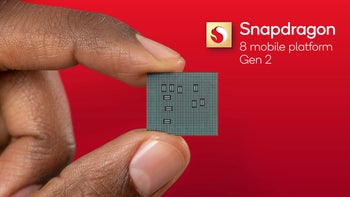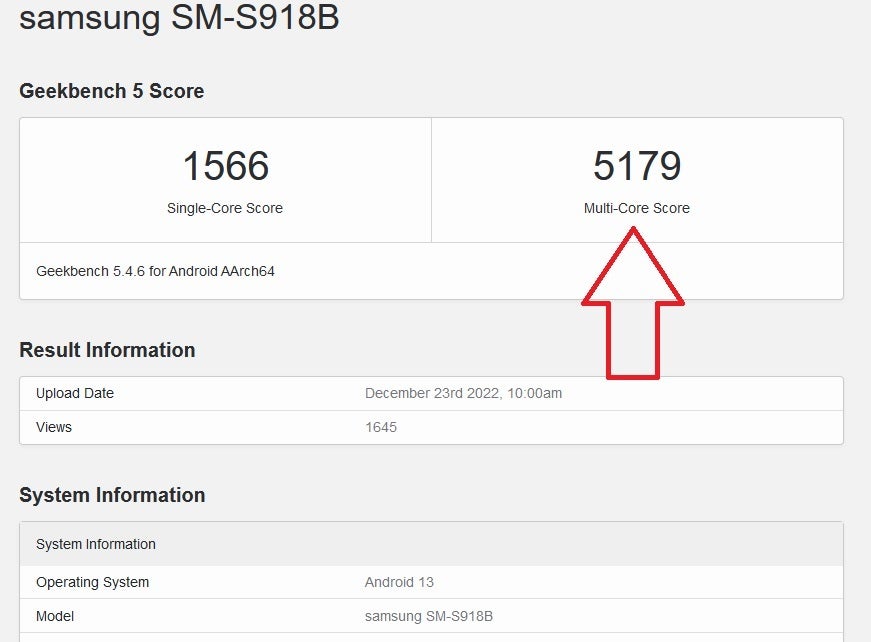Improved cooling system for Galaxy S23 series means no CPU throttling is necessary

You might recall (and then again, you might not) Samsung tipster Ice Universe pointing out that the low Geekbench scores for the Galaxy S23 line indicated that there was something amiss with the overclocked Snapdragon 8 Gen 2 chip powering the Galaxy S23 models. Geekbench is a benchmark test used to measure and compare the central processing unit CPU on the chipsets that power smartphones (it works with processors on other types of devices, but we are focused on handsets for this story).
As we pointed out about a week and a half ago, the Galaxy S23 single-core Geekbench score was in line with the single-core scores generated by other phones using the same SoC. But the multi-core scores were not up to snuff which is odd considering that the X-3 high-performance core on the overclocked Snapdragon 8 Gen 2 should produce higher Geekbench scores than other models running the regular version of the chip.
Previous Geekbench tests hinted that Samsung was throttling the CPU of the Snapdragon 8 Gen 2 for the S23 line
And since none of the multi-core Geekbench tests for the Galaxy S23 line topped a score of 5,000 (something that other phones running the latest Snapdragon application processor (AP) did, it led to concerns that Samsung must be throttling the processor on the Galaxy S23 series which is something that would be done if the chipset was overheating.

This Geekbench test of the European Galaxy S23 Ultra indicates that the phone is not overheating
Let's dive a little deeper into the Snapdragon 8 Gen 2 chipset being used by the Galaxy S23 line. There are two variants; the one that phones like the Motorola X40 and OnePlus 11 will use is manufactured by TSMC using its 4nm process node and an X-3 high-performance core clocked at 3.2 GHz. The version that will be used for the Galaxy S23 line will be made by Samsung Foundry using its 4nm process node and with an overclocked X-3 high-performance core running at 3.32GHz.
But according to Android Headlines, a recent Geekbench test for the Galaxy S23 Ultra tallied a multi-core score of 5,179 finally getting above the 5,000 mark. This indicates that any heating issue that might have forced Samsung to throttle the speed of the processor might have been overcome.
A Twitter tipster by the name of Ahmed Qwaider (@AhmedQwaider888) says that the Galaxy S23 model will feature an improved cooling system that is 1.6 times better than the cooling system on the Galaxy S22. The improvement for the Galaxy S23+ will be 2.8 times better than the cooling system on the Galaxy S22+, and the Galaxy S23 Ultra will have a cooling system 2.3 times better than the one on the Galaxy S22 Ultra.
The new chipset and cooling systems should keep the Galaxy S23 line from overheating
The bottom line is that in times of heavy usage, the improved cooling systems will be able to keep the Galaxy S23 series from overheating without having to throttle the processor. And after all, what would be the point of having overclocked Snapdragon 8 Gen 2 chipsets under the hoods of your flagship phones if these SoCs have to be throttled anyway?
The tipster points out that thanks to the improved cooling system and the new Snapdragon 8 Gen 2 SoC, battery life will improve on the Galaxy S23 models and less heat will be generated. He also says that CPU performance will rise 36% compared to the Snapdragon 8 Gen 1 chip used on the Galaxy S22 series, graphics (GPU) performance will rise 48%, and performance of the Neural Processing Unity (NPU) will rise 60% for the improved use of artificial intelligence (AI) features.
The Samsung Galaxy S23 series is rumored to be pre-installed with the One UI 5.1 interface which includes newer Android 13 features that were released by Google with the Android 13 Quarterly Platform Release 1 that was dropped early last month. The One UI interface is designed to make it easier for users to reach on-screen elements that are usually placed out of reach of users sporting a large-screened phone. This is done by keeping most of the elements near the bottom of the display.










Things that are NOT allowed: